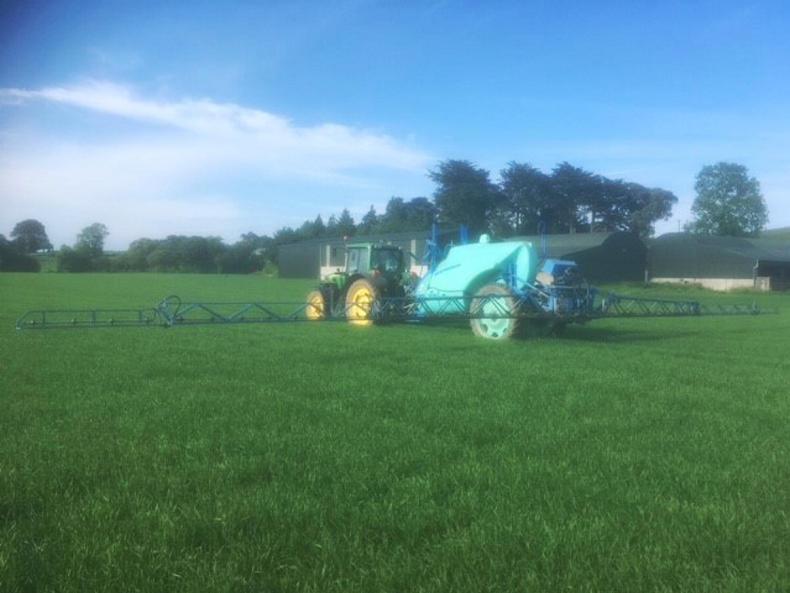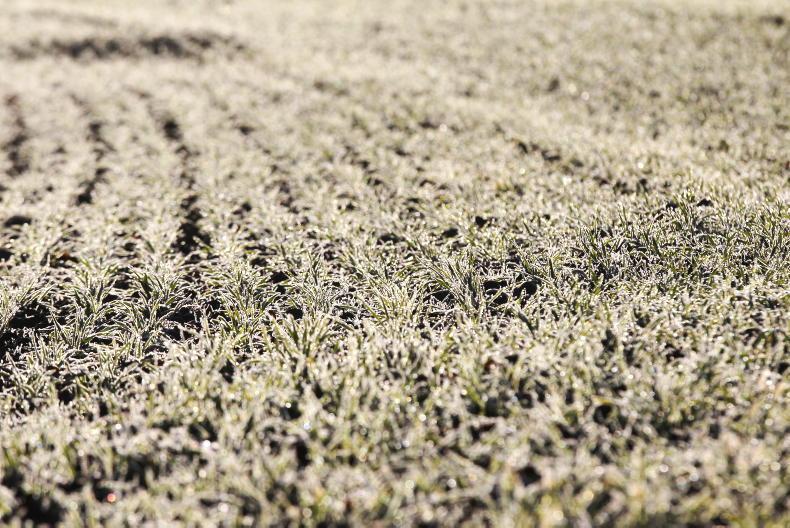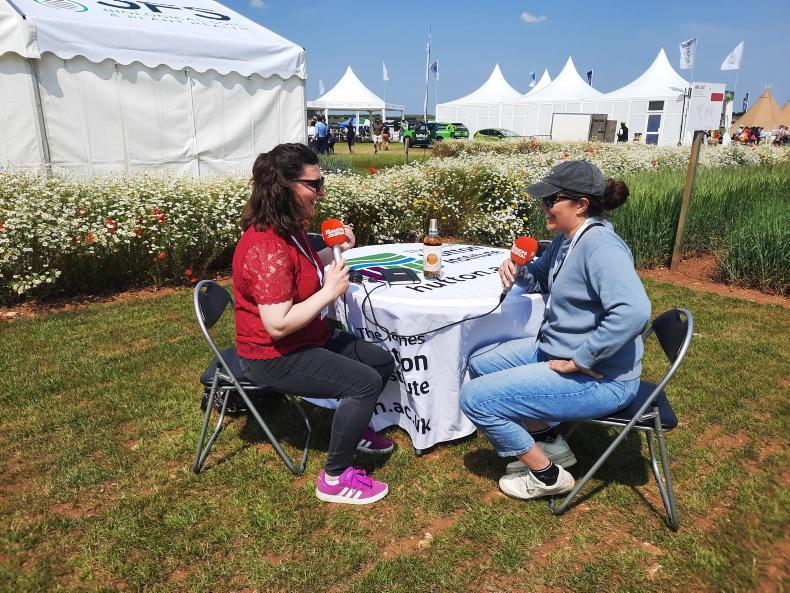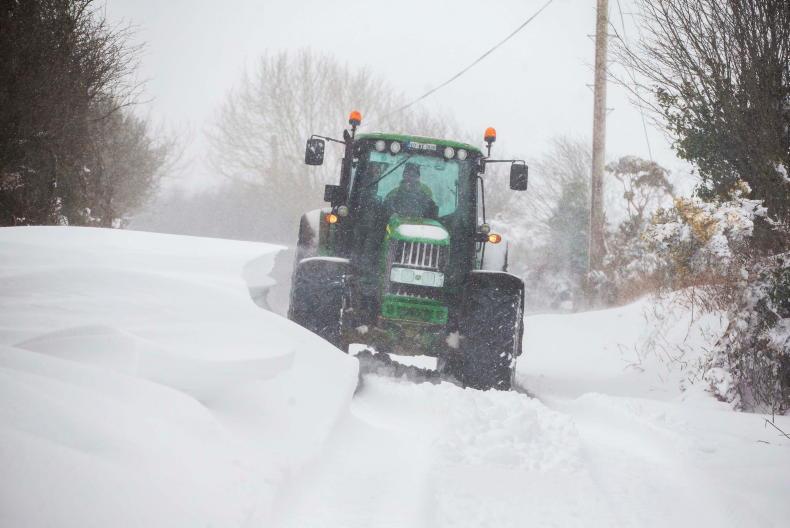The settled weather has made field work a joy although high temperatures has meant spraying have been confined to morning and evening for many growers. Spring crops are showing signs of moisture stress but remain clean and have received a T1 fungicide spray.

Ballycarney, Co Wexford
Heavy thunder showers were a welcome sight last week in Ballycarney as crops were showing signs of stress. The showers were localised, however, meaning some crops missed out entirely and haven’t received a drop since sowing. These crops, which were sown into poor conditions, are now coming under pressure for moisture.
Until the recent rain, trace element deficiencies were very evident in Julian’s spring crops. These were especially prominent in places where lime was tipped in the past.
All the spring crops emerged well and spring malting, seed and feed barley were brought up to 145kg N/ha as soon as the tramlines were visible. This was reduced slightly for distilling crops. As a whole, spring crops are doing reasonably well but as growth has been so rapid, Julian fears that the crops won’t get a chance to fully tiller: “Crops that got rain are looking pretty good but you’d wonder if they will be thin later when they head out.”
Things were done in reverse this spring. Crops were under too much stress to apply the main herbicide so he first applied trace elements, an aphicide and a wild oat spray where required. He then followed up with his main weed spray.
At the four-to-five-leaf stage, the crops received Life Scientific Lambda (50ml/ha), manganese trace elements (1.0l/ha), CCC (0.5l/ha), Axial (0.2l/ha) and Adigor (1.0l/ha). Applying an early aphicide was crucial this year.
Some yellow tips in barley
Some of the earliest sown crops are showing signs of BYDV even though aphids are not present in high numbers. “There was an awful lot of BYDV in fields last year, particularly in the April-sown crops, but this year we don’t see nearly as much.”
Currently at GS 30-31, Julian applied a T1 this week consisting of Siltra (0.5l/ha) as well as Calibre Max (80ml/ha), and Galaxy (0.6-0.75l/ha). Where resistant chickweed is an issue he added in Starane (0.4l/ha). He also applied Optimus (0.15l/ha) on Planet crops as they could struggle to stay upright given the soft growth.
“The nutrient deficiencies with the yellowing were very evident but the rain really helped with that.”

Portlaoise, Co Laois
Fine weather in Portlaoise has allowed Eugene to get on top of the workload. While conditions have been fine, dryness is beginning to take its toll on spring crops and there are real signs of moisture stress. Crops have received around 1in (25mm) of rain since the time of sowing.
Spring crops have tillered well and are rapidly moving through the growth stages. Light spots in the fields, caused by suspected trace element deficiencies are evident. His spring barley is currently at GS35-37 and Eugene thinks that the flag leaf could be out in one weeks’ time.
Eugene’s feed, malting and seed barley were brought up to 150kg N/ha while distilling crops were capped at 105 kg N/ha.
Two weeks ago the crops received a herbicide application consisting of Quantum (50g/ha) and either Echo (0.5l/ha) or Liberty (0.7l/ha). They also received an application of Life Scientific Lambda (50ml/ha) as well as a trace element spray.
“I considered not applying an aphicide given the numbers I had heard coming from Oak Park but I did decide to go with one.”
T1s on spring barley were applied last week, spraying in early mornings and late evenings to avoid the high temperatures.
The crops received Siltra (0.5l/ha) and Moddus (0.15l/ha) and are thus far very clean.
Eugene’s spring oilseed rape received a top dressing of Ammonium Sulphate Nitrate to bring the total up to 155 kg N/ha three weeks ago. He will apply an application of Boron this week and is keeping an eye out for pollen beetles as crops are at stem extension.
Stratus Ultra (3.0l/ha) will be applied on the crop in the next number of days to tidy up scutch grass.
Eugene is very happy with his winter barley – the crop is looking well and very clean. It received its final spray of Venture Extra (0.75l/ha), Priaxor (0.75l/ha), Bravo (1.0l/ha) and Epso Combitop when the awns were peeping.
“Crops are lush and, with soft growth, we will have to monitor them closely to see if we have to come in with Medax Max or Terpal.”

Ballinasloe, Co Galway
From one busy period to another, John now switches his attention to silage season. The warm settled weather has been perfect for harvesting grass, but crops could do with some rain at this stage.
Two weeks ago, Ballinasloe received a day’s rain, which was perfect timing to drive crops on, explains John. Up until that point, some of the later-sown crops in the area were beginning to come under pressure for moisture.
“It looked like a lot of the top-dressed nitrogen was just sitting on the ground and wasn’t washed in.”
John’s spring barley and oats are looking very well. All barley crops were brought up to 150kg of N/ha while the oats were brought up 125kg/ha in one split.
“Normally we’d go with two splits but because of the late spring we put it all out early.” Around three weeks ago the crops received an application of Ally and Starane as well as an application of manganese trace elements and Ambush aphicide.
Last week, his spring oats received a T1 consisting of Helix (0.75l/ha), Corbel (0.15l/ha), CCC (0.125l/ha) and manganese trace elements (1.5l/ha). The crops are at GS32 and are very clean.
Spring barley has tillered well and is looking lush although one field of Gangway is looking poor. At GS30, the crops received a T1 last weekend. Any crops which had problems with wild oats received Foxtrot (0.6l/ha). Crops are clean and, even though aphid numbers are low, there are some signs of BYDV.
Busy time for contractors
Averaging around 100-125 acres/day John is busy lifting silage. Grass quality appears to be very good and acres are up this year as farmers seek to replenish forage stocks.
John is running a Claas 870 forage harvester with a Volvo L70H loading shovel along with five tractors with Dooley trailers.
“When you’re at silage, you have to go anytime you have a spare hour. It could be five in the morning or 12 at night to go spray.”
“We’re seeing a very high demand for straw already. I’ve never had so many bookings for straw at this stage in the year before.”












SHARING OPTIONS